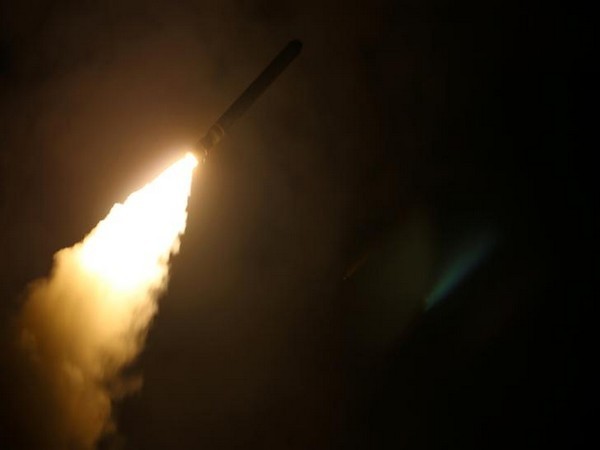North Korea conducts longest-range missile test yet over Japan
South Korea also said it would boost its military and increase allied cooperation. The United States said it strongly condemned North Korea's "dangerous and reckless" decision to launch a long-range ballistic missile over Japan.

- Country:
- North Korea
Nuclear-armed North Korea test-fired a ballistic missile further than ever before on Tuesday, sending one soaring over Japan for the first time in five years, prompting a warning for residents to take cover. It was the first North Korean missile to follow such a trajectory since 2017, and its estimated 4,600 km (2,850 mile) range may have been the longest distance travelled for a North Korean test flight, which are often "lofted" higher into space to avoid flying over neighbouring countries.
The Japanese government warned citizens to take cover and temporarily suspended some train services in the northern part of the country while the missile passed over its territory before falling into the Pacific Ocean. It was the latest in an escalating cycle of military muscle flexing in the region. A U.S. aircraft carrier made a port call in South Korea for the first time since 2018 on Sept. 23, and North Korea has conducted five launches in 10 days.
That period has also seen joint drills by the United States, South Korea and Japan, and a visit to the region by U.S. Vice President Kamala Harris who stood at the fortified border between the Koreas and accused Pyongyang of undermining security. Pyongyang accuses the U.S. and its allies of threatening North Korea with drills and defence buildups.
Recent tests have drawn relatively muted responses from Washington, which is focused on the war in Ukraine as well as other domestic and foreign crises, but the U.S. military has stepped up displays of force in the region. Tokyo said it took no steps to shoot the missile down. Defence Minister Yasukazu Hamada said Japan wouldn't rule out any options, including counterattack capabilities, as it looks to strengthen its defences in the face of repeated missile launches from North Korea. South Korea also said it would boost its military and increase allied cooperation.
The United States said it strongly condemned North Korea's "dangerous and reckless" decision to launch a long-range ballistic missile over Japan. "This action is destabilising and shows the DPRK's blatant disregard for United Nations Security Council resolutions and international safety norms," National Security Council spokesperson Adrienne Watson said in a statement, using the initials for North Korea's official name.
U.S. Secretary of State Antony Blinken held phone calls with his South Korean and Japanese counterparts during which they "strongly condemned" the North's latest test. The launch violates U.N. Security Council resolutions, which have imposed sanctions over Pyongyang's nuclear and missile programmes. 'REAL-WORLD' TEST
Officials in Tokyo and Seoul said the missile flew 4,500 to 4,600 kilometres (2,850 miles) to a maximum altitude of about 1,000 km. South Korea's Joint Chiefs of Staff (JCS) said it appeared to have been an intermediate-range ballistic missile (IRBM) launched from North Korea's Jagang Province. North Korea has used that province to launch several recent tests, including multiple missiles that it claimed were "hypersonic."
The test prompted East Japan Railway Co to suspend train operations in the northern regions, Japanese broadcaster NHK reported. The initial flight details suggest the missile may have been the Hwasong-12 IRBM, which North Korea unveiled in 2017 as part of its threatened plan to strike U.S. military bases in Guam, said Kim Dong-yup, a former South Korea Navy officer who now teaches at Kyungnam University.
The Hwasong-12 was used in 2017 tests that overflew Japan, and Kim noted it was also test fired from Jagang Province in January. Flying a missile such a long distance allows North Korea's scientists to test missiles under more realistic conditions, said Ankit Panda of the U.S.-based Carnegie Endowment for International Peace.
"Compared to the usual highly lofted trajectory, this allows them to expose a long-range reentry vehicle to thermal loads and atmospheric reentry stresses that are more representative of the conditions they'd endure in real-world use," he said. POLITICAL BACKLASH
South Korean President Yoon Suk-yeol called the test "reckless" and said it would bring a decisive response from his country's military, its allies and the international community. Speaking to reporters in Tokyo, Japanese Prime Minister Fumio Kishida called North Korea's actions "barbaric", and said the government would continue to gather and analyse information.
The launch over Japan was "not a productive path forward" but Washington remained open to talks, Daniel Kritenbrink, the top U.S. diplomat for East Asia, said during an online event hosted by the Institute for Corean-American Studies. South Korea's defence minister, Lee Jong-sup, told parliament on Tuesday that the North completed preparations for a nuclear test around May. If there is a test, he said, it might use a smaller weapon meant for operational use, or a device with a higher yield than in previous tests.
Lee said it was difficult to predict when Pyongyang would conduct its seventh nuclear test, but lawmakers briefed by intelligence officials last week said that a possible window could be between China's Communist Party Congress this month and U.S. mid-term elections in November. Kritenbrink said the nuclear test was "likely awaiting a political decision to do so," warning such a "dangerous" act would represent "a grave escalation that would seriously threaten regional and international stability and security."
(This story has not been edited by Devdiscourse staff and is auto-generated from a syndicated feed.)
ALSO READ
Japanese Prime Minister Fumio Kishida to speak to Congress as doubts linger over American global leadership
EXPLAINER-Why is the Japanese yen so weak?
Biden will meet with Philippine and Japanese leaders as worry grows over China's Indo-Pacific action
On eve of Japanese prime minister's visit to North Carolina, Fujifilm announces more jobs there
Japanese interpreter charged with stealing $16 million from MLB star Shohei Ohtani










